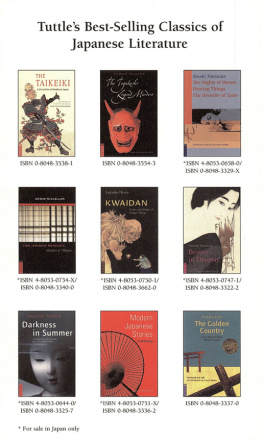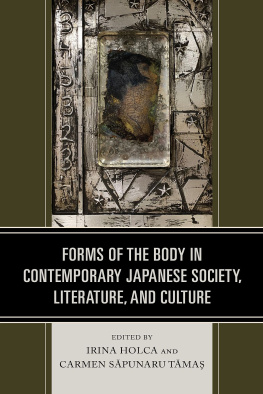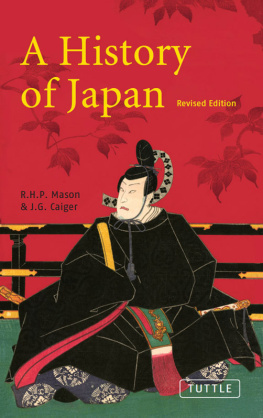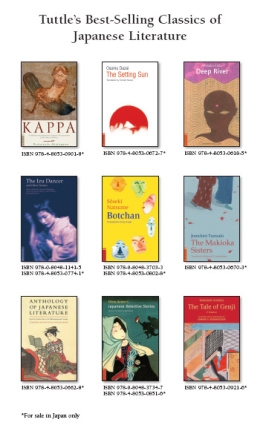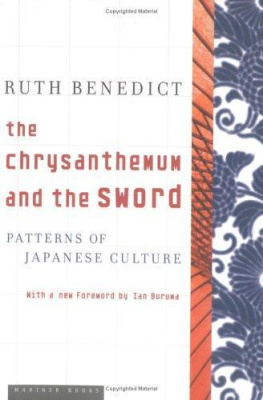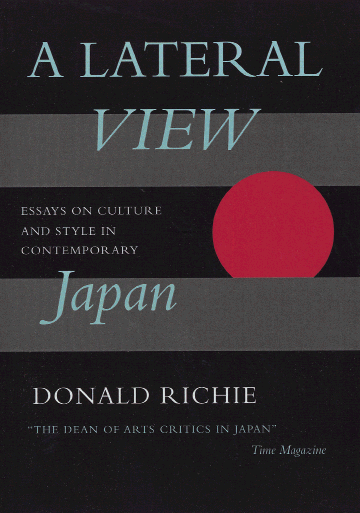THESE ESSAYS cover a period of over twenty-seven years. The earliest was written in 1962 and the latest in 1989. There are other essays, but those were written earlier during my life in Japan and it takes time to understand another country.
Actually, I came to Japan over forty-five years ago, at the end of 1946, when I was twenty-two. I have worked here ever since and have spent a lot of my life describing various aspects of the country, noticing similarities and differences, trying to account for singular patterns, and thinking about separate cultures.
And watching the changes. Half a century is a long time and Japan is a growing country. These changes have been enormous and they are reflected in much of what I have written. In some of the essays the change is written about, in others it is to be inferred.
I have divided my twenty-eight essays into six sections. The first is about the country in general-descriptions of its shapes, patterns, rhythms. The second is about the capital, Tokyo. In the third, various languages are considerednot only Japanese itself but also the languages of gesture and of fashion. The fourth section is devoted to the drama of Japan, and the fifth to its cinema. Finally, the sixth section is about further popular culture.
As the collection proceeds from the general to the particular, the reader will be aware that there is a temporal movement as well. What was true up to 1962 is not necessarily true up to 1989. Japan is fast changing, and some of the things one thought most Japanese are no longer apparent. At the same time it will be noticed that the writer is changing as well. Ones personal values change, just as do those of any society.
If there is a gradual movement from an appreciation to a concern, it accompanies these various changes. I have always tried to describe Japan, but I have also wanted to include my feelings about it. Thus there is here a lot of approval, considerable wonder, a little disappointment, andin the final essaysome brief sarcasm.
Japan: A Description
JAPAN IS ENTERED; the event is marked, as when one enters a Shinto shrine, by passing beneath the torii gateway. There is an outside; then, there is an inside. And once insideinside the shrine, inside Japanthe experience begins with a new awareness, a way of looking, a way of seeing.
You must truly observe. Go to the garden and look at the rock, the tree. Ah, nature, you say and turnthen stop. You have just observed that rock and tree have been placed there, placed by the hand of man, the Japanese hand. A new thought occurs: Nature does not happen; it is wrought. A new rule offers itself: Nothing is natural until it has been so created.
This comes as a surprise to us of a different culture. The Japanese view is anthropomorphic, unashamedly, triumphantly so. The gods here are human, and their mysteries are on display. If we occasionally find the Japanese scene mysterious, it is only because we find such simplicity mysteriousin the West, cause and effect this clear tend to be invisible. Look again at the toriithe support, the supported, and that is all.
Observation, appreciation and, through these, understanding. Not only in Japan, of course, but everywhere, naturally. But in Japan the invitation to observe is strongest because the apparent is so plain.
Look at the architecture. The floor defines the space; from it the pillars hold the beams; on them the roof contains the whole. Nothing is hidden. Traditionally there is no faade. Take the shrines at Ise. Cut wood, sedge, airthat is all they are made of.
The spatial simplicity extends temporally as well. The shrines have been destroyed and identically rebuilt every twenty years since antiquity. This cycle is an alternative to the Pyramidsa simpler answer to the claims of immortality. Rebuild precisely, and time is obliterated. Ise embodies the recipe for infinity: 100 cubits and two decades. That is all. Such simplicity, such economy suggest the metaphysical: the ostensible is the actual, the apparent is the real. We see what is there, and behind it we glimpse a principle.
Universal principles make up nature, but nature does not reveal these principles, in Japan, until one has observed nature by shaping it oneself. The garden is not natural until everything in it has been shifted. And flowers are not natural either until so arranged to be. God, man, earththese are the traditional strata in the flower arrangement, but it is man that is operative, acting as the medium through which earth and heaven meet.
And the arrangement is not only in the branches, the leaves, the flowers. It is also in the spaces in between. Negative space is calculated, tooin the architecture, in the gardens, in the etiquette, in the language itself. The Japanese observes the spaces in between the branches, the pillars; he knows too when to leave out pronouns and when to be silent. Negative space has its own weight, and it is through knowing both negative and positive (yin and yang), the specific gravity of each, that one may understand the completed whole, that seamless garment that is life. There are, one sees, no opposites. The ancient Greek Heraclitus knew this, but we in the Western world forgot and are only now remembering. Asia never forgot; Japan always remembered.
If there are no true opposites, then man and nature are properly a part of one another. Seen from the garden, the house is another section of the landscape. The traditional roof is sedge, the stuff that flourishes in the fields. The house itself is wood, and the mats are reedthe outside brought inside.
The garden is an extension of the house. The grove outside is an extension of the flower arrangement in the alcove. Even now, when land prices make private gardens rare, the impulse continues. The pocket of earth outside the door contains a hand-reared tree, a flowering bush. Or, if that too is impossible, then the alcove in the single matted room contains a tiny tree, a flowering branch, a solitary bloom. Even now that sedge and reed are rarely used, the shapes they took continuethe Japanese reticulation of space insists on inside, outside, man-made nature made a part of nature, a continuing symbiosis. Even now, the ideal is that the opposites are one.



